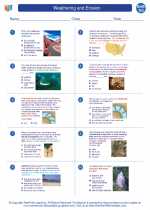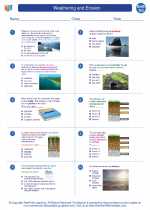Oceans
Oceans cover more than 70% of the Earth's surface and play a crucial role in regulating the planet's climate and supporting a diverse range of marine life.
Ocean Formation
Oceans were formed millions of years ago through a process called seafloor spreading, where tectonic plates move apart, creating gaps that fill with water. The major oceans include the Pacific, Atlantic, Indian, Southern (Antarctic), and Arctic.
Ocean Zones
Oceans have distinct zones, including the sunlight zone (photic), twilight zone (mesopelagic), midnight zone (bathypelagic), abyssal zone, and the hadal zone. Each zone has unique characteristics and supports different forms of marine life.
Ocean Currents
Ocean currents are continuous, directed movements of seawater generated by a combination of wind, temperature, and salinity. They play a critical role in regulating global climate and redistributing heat around the Earth.
Ocean Life
Oceans support an incredibly diverse array of marine life, including microscopic phytoplankton, fish, mammals (such as whales and dolphins), and invertebrates like corals and sponges. Marine ecosystems are complex and interconnected, relying on factors such as temperature, sunlight, and nutrient availability.
Human Impact
Human activities, such as overfishing, pollution, and climate change, have had significant impacts on the health of the world's oceans. It's crucial to understand and address these issues to protect the delicate balance of marine ecosystems.
Study Guide
- What percentage of the Earth's surface is covered by oceans?
- Describe the process of ocean formation.
- Identify and explain the different ocean zones.
- How are ocean currents formed, and what role do they play in the Earth's climate?
- Discuss the diverse marine life found in oceans and the factors that influence marine ecosystems.
- What are some of the major human impacts on the world's oceans, and why is it important to address these issues?
[Oceans] Related Worksheets and Study Guides:
.◂Earth Science Worksheets and Study Guides High School. Weathering and Erosion

 Worksheet/Answer key
Worksheet/Answer key
 Worksheet/Answer key
Worksheet/Answer key
 Vocabulary/Answer key
Vocabulary/Answer key
 Vocabulary/Answer key
Vocabulary/Answer key
 Vocabulary/Answer key
Vocabulary/Answer key
